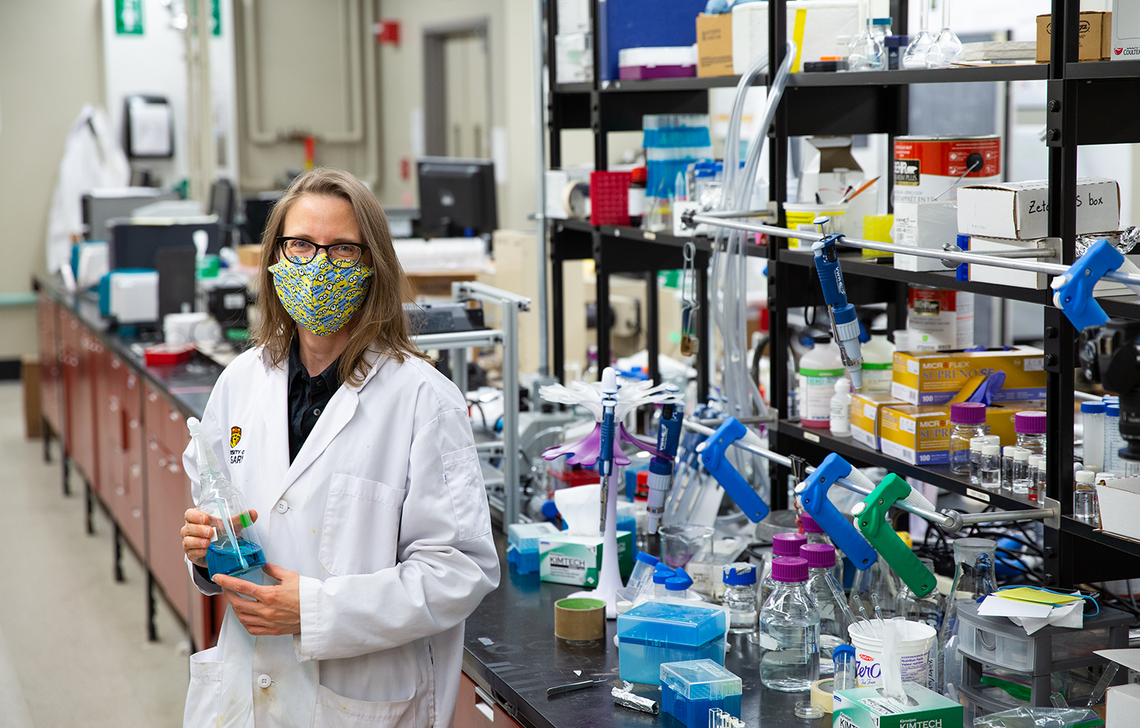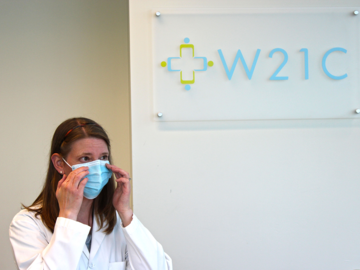Jan. 14, 2021
Global study investigates decontamination methods for medical masks

Personal protective equipment (PPE) is just as the name makes clear: personal. Like your toothbrush, you wouldn't remove and share your mask or face covering with your colleague. But if masks can be decontaminated effectively and then reused, you might. This practice would help combat future global supply shortages. Researchers at the University of Calgary are part of an international multi-centre study that has evaluated decontamination methods to maintain mask integrity and performance.
“Having the right equipment and ensuring its appropriate use is a key component for PPE and for preventing further spread of COVID-19 to the care provider, but as we have seen there have been shortages reported throughout the world,” says Dr. John Conly, MD, medical director of the W21C Research and Innovation Centre at the Cumming School of Medicine (CSM), and co-principal investigator of the Calgary study team.
“With the members of the global consortium with whom we are engaged, we will be providing recommendations for countries and settings who may not necessarily have access to sufficient PPE or limited decontamination facilities.”
Currently, medical masks are designated as single-use, but an effective decontamination and reuse strategy would ensure a sustained supply.
The Development of Methods for Mask and N95 Decontamination (DeMaND) study, a global research consortium comprising 13 organizations, universities, and laboratories, including the World Health Organization and Centers for Disease Control and Prevention, investigated the reuse of masks for health-care workers at the frontline — including N95 respirators, specialized masks that form a complete seal around the nose and mouth.

Belinda Heyne holds a beaker of the methylene blue solution used in the decontamination process in her laboratory.
Riley Brandt, University of Calgary
The masks are put through two decontamination processes that are accessible for low- to middle-income countries: dry heat and photodynamic inactivation — an antimicrobial process where the mask is sprayed with a non-toxic solution of methylene blue and then exposed to light, which creates reactive oxygen species that kill the virus responsible for COVID-19.
“The decontamination methods we are evaluating are low cost, easy to perform and can be applied anywhere,” says Dr. Belinda Heyne, PhD, professor in the Faculty of Science and co-principal investigator of the Calgary study team. “If these decontamination methods are effective, masks could then be safely reused in any global setting.”
Digital Media, Advancement
Once put through the decontamination process, the masks are tested to ensure that safety, integrity, and performance are maintained. The Calgary arm of the study is unique in its evaluation of this aspect compared to its global study partners. In Calgary, an evaluation of user acceptance of the decontaminated masks with frontline providers was conducted. Researchers performed comfort and fit tests as well as gained perspectives from health-care providers to see if PPE can eventually become less personal.
The DeMaND study’s results were made available for preprint. The Calgary-based user acceptance testing is awaiting publication.
John Conly is a professor in the departments of Medicine, Pathology and Laboratory Medicine, and Microbiology, Immunology and Infectious Diseases and member of O’Brien Institute for Public Health, and the Snyder Institute for Chronic Diseases at the CSM. He is the medical director of the W21C Research and Innovation Centre.
Belinda Heyne is a professor in the Department of Chemistry in the Faculty of Science. Her research uses photochemistry and photobiology to understand and control the production of reactive oxygen species in biological environments. She was named one of the Parex Resources Innovation Fellows for 2020-2021.












